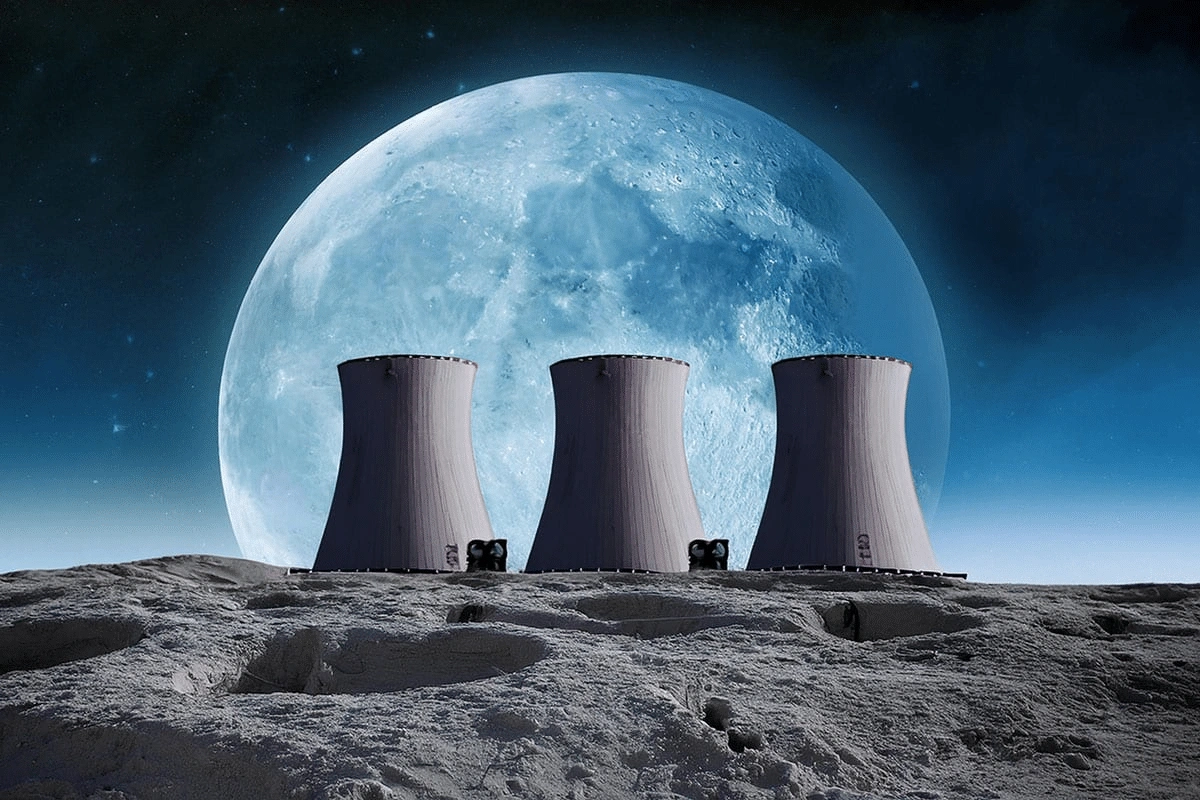In a bold stride toward space leadership, Russia and China have formalized their commitment to building a lunar nuclear power plant by 2036. The project, a cornerstone of the International Lunar Research Station (ILRS), highlights a growing shift in the global space race. Unlike earlier Moon missions focused solely on exploration, this new phase centers on sustainability, autonomy, and geopolitical influence.
This collaborative effort between two of the world’s leading space powers reflects a vision not just of planting flags, but of staying on the Moon — permanently.
Why a Lunar Nuclear Power Plant Is Critical
The Moon’s environment is uniquely hostile for continuous human or robotic operations. Lunar nights last up to 14 Earth days, during which temperatures plummet to minus 170°C. Solar panels, the traditional energy source for space missions, are unreliable during these extended dark periods.
That’s where the lunar nuclear power plant comes in. Nuclear energy can provide consistent, long-lasting power regardless of sunlight. According to Yury Borisov, chief of Roscosmos, solar arrays are simply “not enough” for long-term missions. The project aims to enable a round-the-clock energy supply for heating, lighting, scientific instruments, and potentially human life support systems.
The plant is expected to power not only standalone instruments but also critical infrastructure at the ILRS, including communication towers, excavation robots, and autonomous laboratories.
How the Project Will Be Built
Constructing a nuclear power station on the Moon is no simple task. The plan involves autonomous construction technologies, given the extreme costs and risks of sending human labor. Russia is taking the lead on reactor design, building on decades of experience in space-based nuclear systems, including satellites powered by compact reactors.
Meanwhile, China is expected to provide launch support and infrastructure logistics, given its successful Chang’e missions and upcoming heavy-lift rocket capabilities. Chang’e-8, scheduled for 2028, is likely to be a critical testbed for some of the construction technologies and component deployment.
The International Lunar Research Station itself will likely be located near the Moon’s south pole, a region rich in permanently shadowed craters believed to contain water ice — a key resource for sustaining life and potentially producing fuel.
Strategic Implications for Space Diplomacy
This partnership between Russia and China carries weight not just scientifically, but politically. It serves as a direct alternative to NASA’s Artemis program, which aims to return humans to the Moon by mid-2030s. However, Artemis has faced delays, particularly in building its lunar orbital platform and base modules.
The lunar nuclear power plant thus symbolizes a competing model of space leadership — one not led by the West. It’s a signal that Russia and China intend to shape the future of lunar governance, technology standards, and access to space resources.
Seventeen other countries have reportedly expressed interest in joining the ILRS partnership, reflecting a growing appetite for multipolar cooperation in space.
Technological and Safety Challenges
Developing and installing a nuclear reactor on the Moon introduces significant technical and ethical hurdles. First, the reactor must be lightweight yet powerful, shielded against both radiation and micrometeorite impacts. Second, the robotic systems needed to assemble it must operate in an environment with no atmosphere, high radiation, and extreme thermal variation.
Equally important are the nuclear safety protocols. International treaties — particularly the 1967 Outer Space Treaty and the UN’s Principles Relevant to Nuclear Power Sources in Outer Space — require that states avoid contaminating celestial bodies and conduct risk assessments for any nuclear activity.
As the project progresses, both Russia and China will face scrutiny over how they plan to safely transport, deploy, and manage the reactor. Transparency will be essential in gaining international support and minimizing geopolitical tension.
Impacts on Scientific Research and Resource Extraction
Once operational, the lunar nuclear power plant could open the door to a new era of space science and lunar resource extraction. Reliable power would allow 24/7 operation of instruments measuring radiation, seismic activity, and regolith composition. It could also support experiments in plant growth, biology, and closed-loop life support systems.
Moreover, the south pole region’s water ice can be converted into hydrogen and oxygen — potentially used for rocket fuel. Long-term, the Moon may also offer access to rare isotopes like Helium-3, which some scientists see as a potential fuel for future fusion reactors.
The ability to power extraction and refining processes directly on the Moon would reduce reliance on Earth launches, significantly lowering costs and improving mission feasibility.
The Bigger Picture: Mars and Beyond
The lunar nuclear power plant isn't just about the Moon. It’s a prototype for energy systems that could one day power missions to Mars and beyond. The technologies developed — in reactor miniaturization, robotic assembly, and long-term autonomy — will have ripple effects across space exploration and terrestrial industries alike.
As Russia and China move ahead with their lunar agenda, they’re also setting a precedent for how nations can cooperate in space while maintaining strategic interests. The ILRS and its nuclear plant could be a model for future multi-national bases on other planets, especially if regulatory frameworks evolve to accommodate such ventures.
Conclusion
The planned lunar nuclear power plant by Russia and China is more than just an engineering marvel. It’s a statement of intent, a declaration that the future of space is about permanence, power, and politics.
With a target completion date of 2036, this project could change the trajectory of space exploration for decades to come. As energy, science, diplomacy, and security converge on the Moon, the next frontier will not just be reached — it will be powered.
Read More






 Monday, 03-11-25
Monday, 03-11-25







